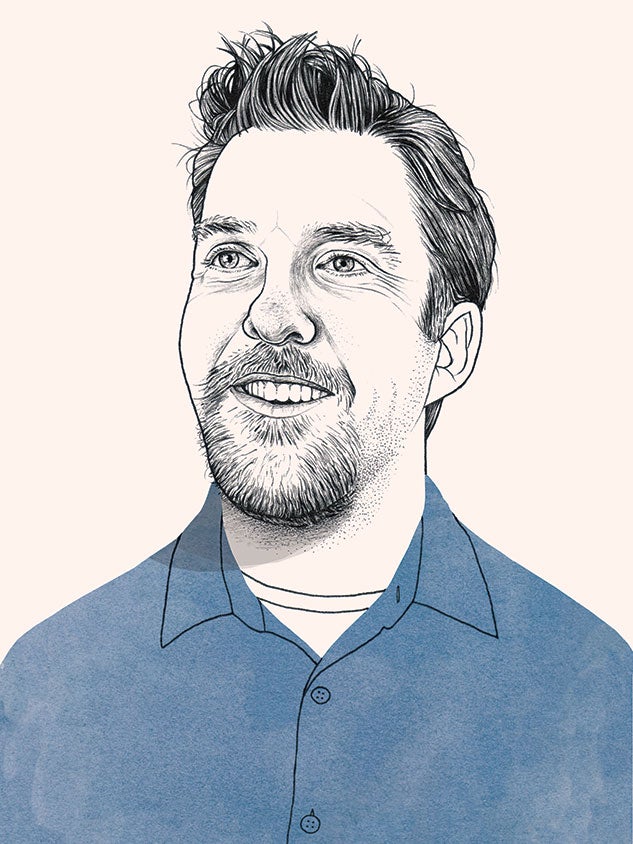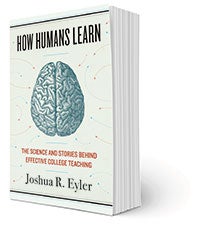Unconventional Wisdom
Josh Eyler in his own words

Josh Eyler wanted to be a teacher since he was 5 years old, but it wasn’t until graduate school that he became interested in different teaching approaches and development. As director of Rice’s Center for Teaching Excellence, he now oversees a robust program of pedagogical training, mentoring and practical experiences.
In his first book, “How Humans Learn: The Science and Stories Behind Effective College Teaching” (West Virginia University Press, 2018), Eyler identifies five broad themes — curiosity, sociality, emotion, authenticity and failure — and discusses what educators can take away from each to improve students’ learning experiences.
Curiosity
That’s first in the book because I think, as individuals, that is what moves us to learn more. It’s kind of the fundamental driver of learning — the desire to know more and then following up on that. I actually begin with an account of when my daughter was a baby and watching her fascination with these red coffee cups we had, and I had never seen such purely fundamental curiosity, like curiosity as not just an intellectual exercise but as a need, and that moment just shifted everything for me. What happens to that? It’s a natural part of who we are and it’s driving the way she is interacting with the world, so where does that go? How can we tap into it? How can we use it as a tool?
Sociality
[In the book,] I do talk a lot about the biology of learning and what is happening in our brains when we’re learning. And not just what’s happening in our brains, but also how our brains have come to learn in that particular way. The second chapter is all about social connection and how we as people not only thrive on social connection, but also fundamentally need it. And that extends to our learning as well; we learn much better from other people than we do by ourselves. Part of it is because this is how we have developed as people through those social interactions. The earliest communication was people talking to other people about information that they needed to know. And so those teaching relationships have a very, very long history and do become embedded in the fabric of who we are.

Emotion
So much of the research on emotion and learning shows that emotion and cognition go hand in hand. For a long time, people thought that one came before the other — that you had to feel before you could think or vice versa — but now we know the different parts of the brain are interacting at some of the emotional parts, some of the cognitive parts, and there are pieces of the brain that are fundamental to both responses. They work in tandem really nicely, so if you think about ways that you can use humor and joy in the classroom — make people experience the joy of the subject matter or you create really warm, welcoming environments in the classroom — those are prime ways that your emotions are tied to learning.
Authenticity
Our brains are really good at picking out what is an artificial learning environment where we don’t have to pay attention, and what is an authentic, real learning environment. Flying an airplane and being in a flight simulator would both be authentic because they are mirroring real settings; they’re real to the brain. But being given a lecture on how to fly a plane would not be, so they’re two different sorts of things. I could watch the Food Network all I want. That’s not gonna teach me what I need to know until I get in there and start doing it. We have all been in lectures where we’re thinking, “Uh, why do I possibly need to know this?” And that is the signal — that’s the manifestation of a lack of authenticity.
Failure
Our educational systems all the way up are set up to discourage failure and to stigmatize failure. As scholars in higher education, we know just from our work when we go to do research, we don’t magically come up with the right answer. It’s trial and error over and over again till you come to something that looks close to success. [As scholars, we] intuitively know that, but educational systems are set up in exactly the opposite way — that it’s immediate success in high-stakes environments.
We haven’t mined all the possibilities for a productive use of failure and error in the classroom. On a biological level, we’re making mistakes and errors all the time. So it’s a feature, not a bug; this is the way our learning processes work. We also have parts of our brain that are specifically attuned to catching errors and devoting cognitive resources to them. We need to think about that as teachers and embrace it while knowing our students have a dominant fear of failure. This is something that has been cultivated their entire lives.
— Katharine Shilcutt
